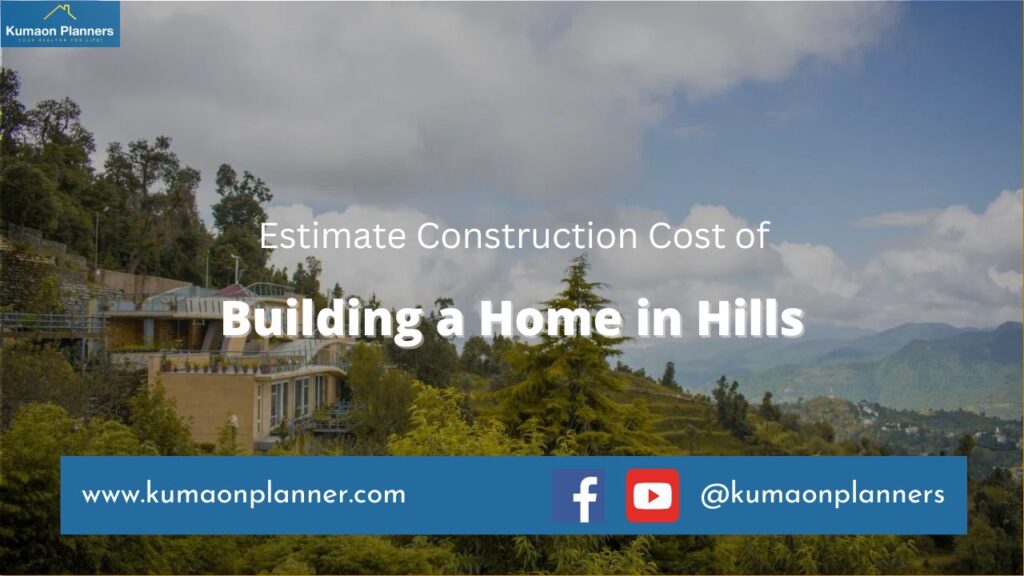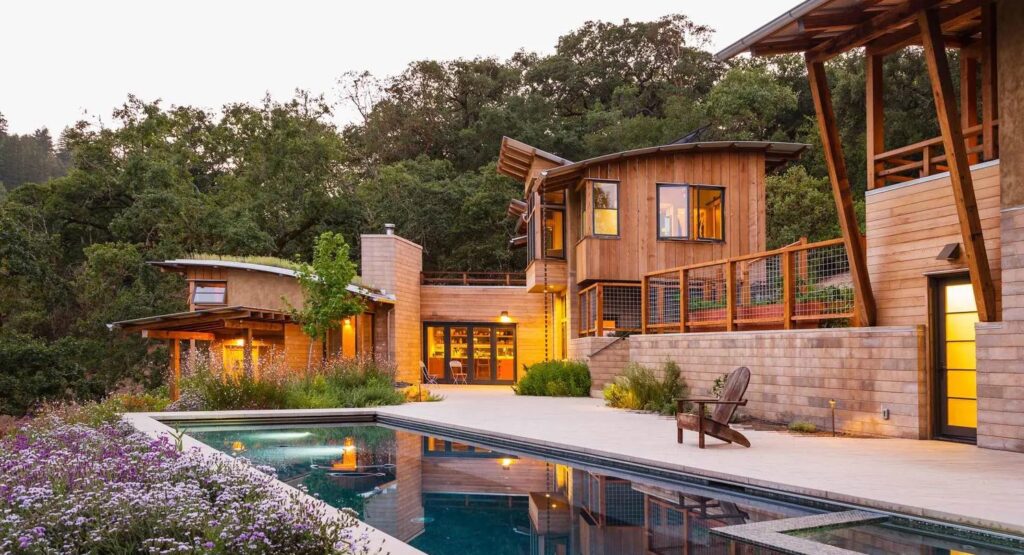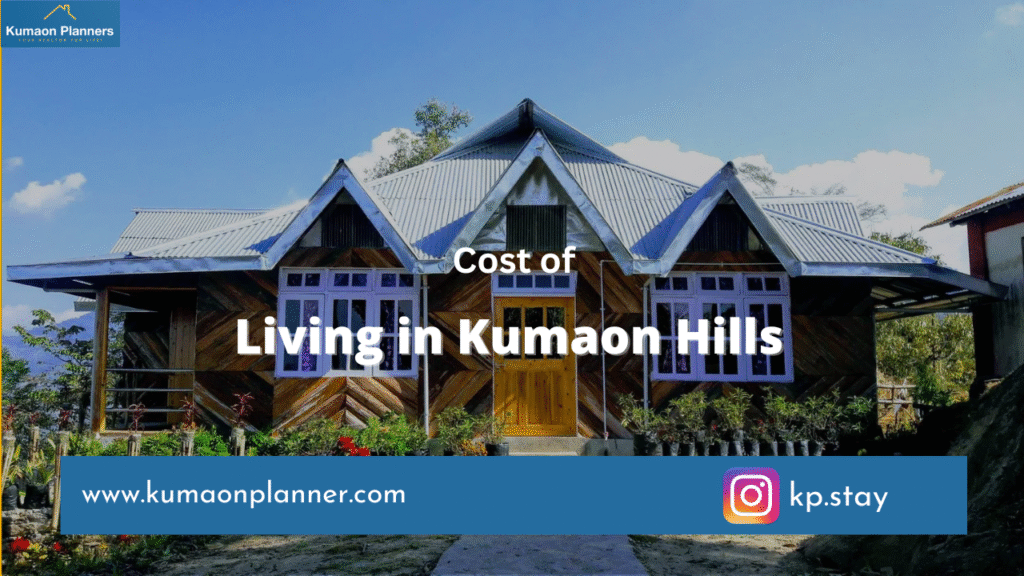Building a home in the scenic Kumaon hills of Uttarakhand is a dream for many. The serene environment, stunning views, and peaceful lifestyle make it an attractive destination for both permanent residences and vacation homes. However, constructing a house in the hills comes with unique challenges and costs that differ from those in the plains. This guide will help you understand the various expenses involved in building a home in the Kumaon region, ensuring you can budget effectively and avoid unexpected surprises.
1. Land Acquisition Costs
A. Price per Nali/Bigha in Different Areas
The first step in building your dream home is acquiring land. In Kumaon, land is often measured in units such as nali and bigha.
- One nali equals approximately 2160 square feet.
- One bigha equals 756 square yards or 6804 square feet.
The cost of land varies significantly depending on the location. For example:
- Nainital: ₹50-60 lakhs per nali.
- Mukteshwar: ₹20-40 lakhs per nali.
- Almora: ₹10-15 lakhs per nali.
Prices are generally higher in areas with better connectivity and proximity to popular tourist destinations. And a bit lower in the interior areas with less facility or approach.
B. Legal and Registration Fees
Once you’ve found the perfect piece of land, you’ll need to consider the legal fees associated with purchasing it. These include:
- Stamp duty: 3-5% of the property’s market value.
- Registration fee: 2% of the property’s value, capped at a maximum of ₹25,000
- Lawyer fees: ₹10,000-₹50,000 depending on the complexity of the transaction.
C. Site Preparation
Preparing the land for construction is another crucial step. Hilly terrain often requires additional work such as:
- Leveling and grading: ₹1-2 lakhs per nali.
- Retaining walls: ₹2-4 lakhs per wall, depending on size and material.
2. Design and Planning Costs
A. Architectural and Engineering Fees
Hiring professionals to design and plan your home is essential.
- Architect fees: 3-8% of the total construction cost.
- Structural engineer fees: ₹50,000-₹1 lakh depending on the complexity of the design.
B. Building Permits and Approvals
Before starting construction, you must obtain the necessary permits:
- Building permit: ₹25,000-₹50,000.
- Environmental clearances: Required in certain areas, costs can range from ₹10,000-₹1 lakh.
C. Environmental Impact Assessments
In some cases, particularly for larger projects, you may need to conduct an environmental impact assessment:
- Cost: ₹1-2 lakhs depending on the size and location of the project.
3. Construction Material Costs
A. Locally Sourced Materials vs. Imported Materials
Using locally sourced materials like stone and wood can reduce costs:
- Local stone: ₹30-50 per square foot.
- Wood: ₹500-₹1500 per cubic foot.
Imported materials like marble or high-end fittings can significantly increase your budget.
B. Transportation Costs
Transporting materials to remote or hilly areas adds to the overall cost:
- Transportation cost: ₹50,000-₹2 lakhs depending on the distance and type of materials.
C. Seasonal Price Variations
Material costs can fluctuate depending on the season, with prices often rising during peak construction periods (summer and autumn).
4. Labor Costs
A. Skilled vs. Unskilled Labor
Hiring skilled labor for tasks like masonry, carpentry, and electrical work is more expensive but necessary:
- Skilled labor: ₹500-₹1000 per day.
- Unskilled labor: ₹300-₹700 per day.
B. Local Labor Availability
In some areas, you may need to bring in workers from outside the region, which can increase costs due to the need for accommodation and transportation.
C. Labor Contract vs. Daily Wages
You can hire labor on a contract basis or pay daily wages. Contract labor usually includes material costs and may be more economical in the long run.
5. Infrastructure Development Costs
A. Road Access and Connectivity
If your land is in a remote area, you may need to invest in road access:
- Cost: ₹1-2 lakhs per kilometer for basic road construction.
B. Utilities Installation
Installing essential utilities like water, electricity, and sewage systems is crucial:
- Electricity connection: ₹50,000-₹1 lakh.
- Water supply: ₹1-2 lakhs depending on source and distance.
- Sewage system: ₹2-3 lakhs.
C. Alternative Energy Solutions
In remote areas, alternative energy solutions like solar power may be necessary:
- Solar panels: ₹1-2 lakhs depending on the size and energy requirements. Know more about Solar Solution in Uttarakhand.
6. Interior and Finishing Costs
A. Basic Finishing (Floors, Walls, Ceilings)
Basic finishing costs can vary depending on materials:
- Flooring: ₹100-₹300 per square foot for tiles or wood.
- Walls and ceilings: ₹50-₹150 per square foot for plaster and paint.
B. Custom or High-End Finishes
If you opt for high-end materials or custom finishes, expect to pay significantly more.
C. Furnishing and Fixtures
Budgeting for furniture and fixtures is also important:
- Basic furniture: ₹1-2 lakhs for essentials.
- Fixtures (lighting, plumbing): ₹50,000-₹1 lakh.
7. Contingency Costs
A. Unforeseen Expenses
It’s wise to allocate 10-15% of your total budget for unforeseen expenses such as delays, material shortages, or unexpected issues with the land.
B. Buffer for Inflation and Price Hikes
Given the fluctuations in material and labor costs, especially in remote areas, having a buffer in your budget for inflation is crucial.
8. Total Cost Estimation
A. Summary of All Estimated Costs
Summing up all the above costs, the total expenditure for building a home in the Kumaon Hills can vary widely depending on your choices:
- Basic construction: ₹1,500-₹3,000 per square foot.
- Premium construction: ₹3,000-₹5,000 per square foot.
B. Cost Per Square Foot/Nali
For a 2,000 square foot home (approx. 1 nali):
- Basic construction: ₹30-60 lakhs.
- Premium construction: ₹60 lakhs-1 crore.
C. Financing Options
Consider exploring home loans and other financing options that can make managing these costs easier. Many banks offer special schemes for construction in hilly areas.
Conclusion
Building a home in the Kumaon Hills is a significant investment, but with careful planning and budgeting, it’s possible to create your dream residence in this beautiful region. Understanding the costs involved will help you make informed decisions and ensure your project runs smoothly. Always consult with local experts to refine your estimates and stay within budget.



